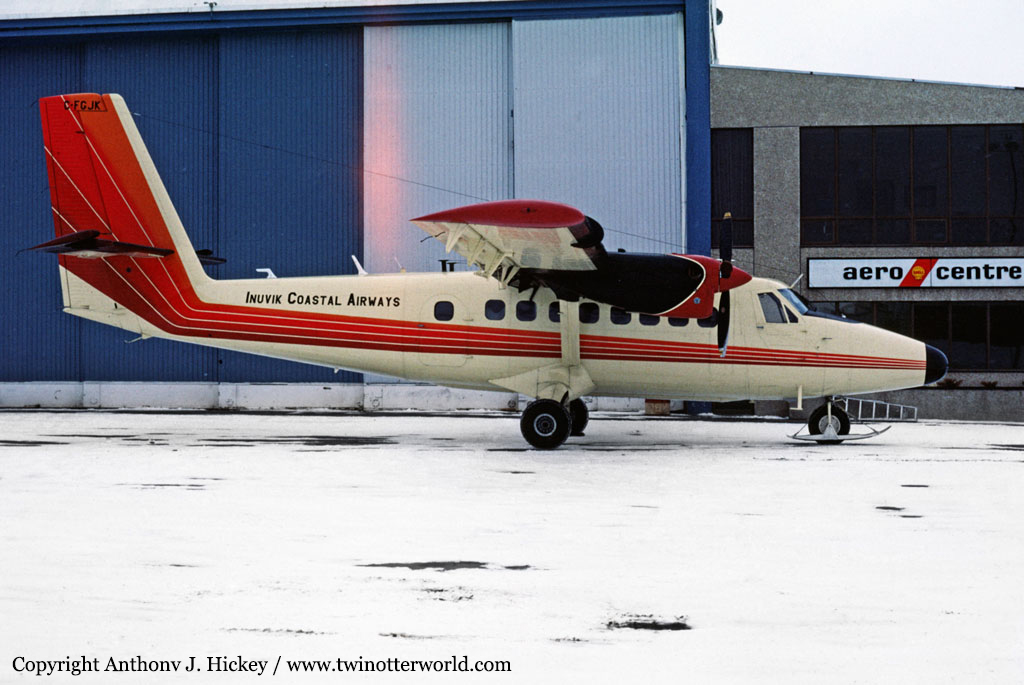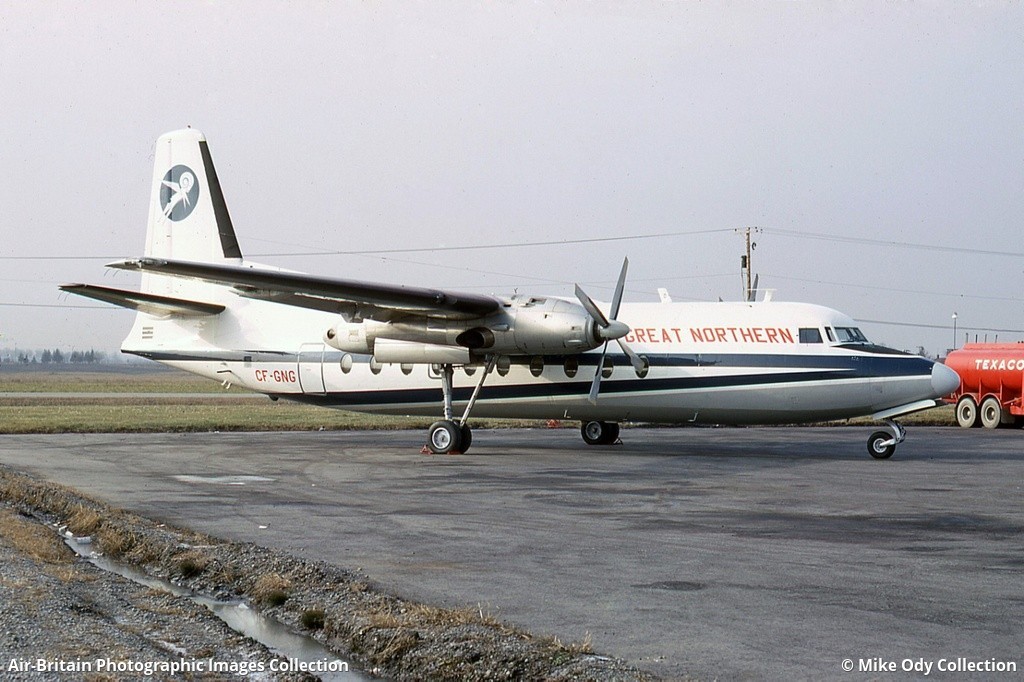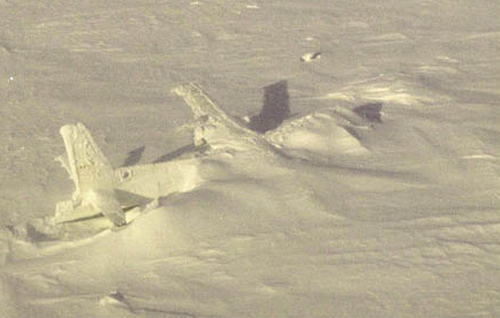Crash of a Britten-Norman BN-2A-27 Islander near Tuktoyaktuk: 7 killed
Date & Time:
Dec 3, 1993 at 1713 LT
Registration:
C-GMOP
Survivors:
No
Schedule:
Tuktoyaktuk - Inuvik
MSN:
398
YOM:
1974
Crew on board:
1
Crew fatalities:
Pax on board:
6
Pax fatalities:
Other fatalities:
Total fatalities:
7
Captain / Total hours on type:
848.00
Aircraft flight hours:
9391
Circumstances:
On 03 December 1993, a Britten-Norman BN2A-20 Islander, registration C-GMOP, owned and operated by Arctic Wings and Rotors, departed Tuktoyaktuk, Northwest Territories, on a night
visual flight rules (VFR) flight to the Inuvik townsite airstrip. On board were the pilot and six passengers. The pilot took off from runway 09 at 1706:34 mountain standard time (MST) , and had turned the aircraft to a southerly direction when the right engine (Textron Lycoming IO540-K1B5) lost all power. At 1710:40, the pilot reported to Tuktoyaktuk Flight Service Station (FSS) that he had an engine problem and was trying to get back to the airport. At 1711:44, he reported that he was "presently heading back to the airport at this time." At 1711:58, he reported "showing six miles back from the airport at this time." The FSS specialist asked if he was declaring an emergency, and the pilot's response was indecisive. During the last radio transmission, there were indications of stress in the pilot's voice; however, there was no further mention of the specific nature of the problem. The pilot did not report his altitude during the conversations with the FSS. The transmission lasted approximately 15 seconds and ended at 1713:03. When the aircraft did not return to the airport, an air and ground search was initiated. The aircraft was located on an ice-covered lake approximately eight miles southeast of the airport. The aircraft struck the ice in a steep nose-down attitude. The engines and front of the aircraft penetrated the approximately two-foot-thick layer of ice. The remainder of the fuselage, wings, and empennage remained on the ice surface. The seven occupants were fatally injured. The accident occurred during the hours of darkness at approximately 1713 MST, at latitude 69°20'N, longitude 132°56'W, at an elevation of approximately 50 feet above sea level (asl).
visual flight rules (VFR) flight to the Inuvik townsite airstrip. On board were the pilot and six passengers. The pilot took off from runway 09 at 1706:34 mountain standard time (MST) , and had turned the aircraft to a southerly direction when the right engine (Textron Lycoming IO540-K1B5) lost all power. At 1710:40, the pilot reported to Tuktoyaktuk Flight Service Station (FSS) that he had an engine problem and was trying to get back to the airport. At 1711:44, he reported that he was "presently heading back to the airport at this time." At 1711:58, he reported "showing six miles back from the airport at this time." The FSS specialist asked if he was declaring an emergency, and the pilot's response was indecisive. During the last radio transmission, there were indications of stress in the pilot's voice; however, there was no further mention of the specific nature of the problem. The pilot did not report his altitude during the conversations with the FSS. The transmission lasted approximately 15 seconds and ended at 1713:03. When the aircraft did not return to the airport, an air and ground search was initiated. The aircraft was located on an ice-covered lake approximately eight miles southeast of the airport. The aircraft struck the ice in a steep nose-down attitude. The engines and front of the aircraft penetrated the approximately two-foot-thick layer of ice. The remainder of the fuselage, wings, and empennage remained on the ice surface. The seven occupants were fatally injured. The accident occurred during the hours of darkness at approximately 1713 MST, at latitude 69°20'N, longitude 132°56'W, at an elevation of approximately 50 feet above sea level (asl).
Probable cause:
A magneto impulse coupling, worn beyond the prescribed limits, resulted in the failure of the right engine. Following the engine failure, the pilot mistrimmed the rudder and was unable to maintain control of the aircraft.
Final Report:
Crash of a Britten-Norman BN-2A-27 Islander in Inuvik
Date & Time:
Jan 26, 1990
Registration:
C-GSAF
Survivors:
Yes
MSN:
263
YOM:
1971
Crew on board:
0
Crew fatalities:
Pax on board:
0
Pax fatalities:
Other fatalities:
Total fatalities:
0
Circumstances:
Crashed in unknown circumstances. There were no casualties.
Crash of a De Havilland DHC-6 Twin Otter 200 in Paulatuk: 2 killed
Date & Time:
Dec 17, 1983 at 1310 LT
Registration:
C-FGJK
Survivors:
Yes
Schedule:
Inuvik - Paulatuk
MSN:
213
YOM:
1969
Crew on board:
1
Crew fatalities:
Pax on board:
11
Pax fatalities:
Other fatalities:
Total fatalities:
2
Circumstances:
On approach to Paulatuk Airport, the pilot encountered marginal weather conditions with strong cross winds and blowing snow. On short final, while making a transition from visual to instruments flight rules, the pilot decided to initiate a go-around when the left wing struck the ground. Out of control, the aircraft veered to the left and came to rest. The pilot and a passenger were killed while 10 other occupants were injured.
Probable cause:
It was determined that the accident was the consequence of the combination of the following factors:
- The Paulatuk aerodrome runway is not oriented to correspond with the prevailing winds,
- Environment Canada does not produce an aerodrome forecast for Paulatuk,
- As the aircraft landed, the crosswind from the right increased appreciably reducing visibility in blowing snow,
- During the overshoot, as the pilot was making the transition from visual to instrument flight conditions, control of the aircraft was lost,
- The aircraft was overloaded by 840 lbs.
- The Paulatuk aerodrome runway is not oriented to correspond with the prevailing winds,
- Environment Canada does not produce an aerodrome forecast for Paulatuk,
- As the aircraft landed, the crosswind from the right increased appreciably reducing visibility in blowing snow,
- During the overshoot, as the pilot was making the transition from visual to instrument flight conditions, control of the aircraft was lost,
- The aircraft was overloaded by 840 lbs.

Crash of a Fairchild F-27J in Inuvik
Date & Time:
Dec 20, 1969
Registration:
CF-GNG
Survivors:
Yes
MSN:
114
YOM:
1965
Crew on board:
0
Crew fatalities:
Pax on board:
0
Pax fatalities:
Other fatalities:
Total fatalities:
0
Circumstances:
Upon landing at Inuvik Airport, the airplane went out of control, veered off runway and came to rest. There were no casualties but the aircraft was damaged beyond repair.
Probable cause:
It is believed that the loss of control was the consequence of a technical issue with propellers as only one was in fine pitch, causing asymmetric thrust.


